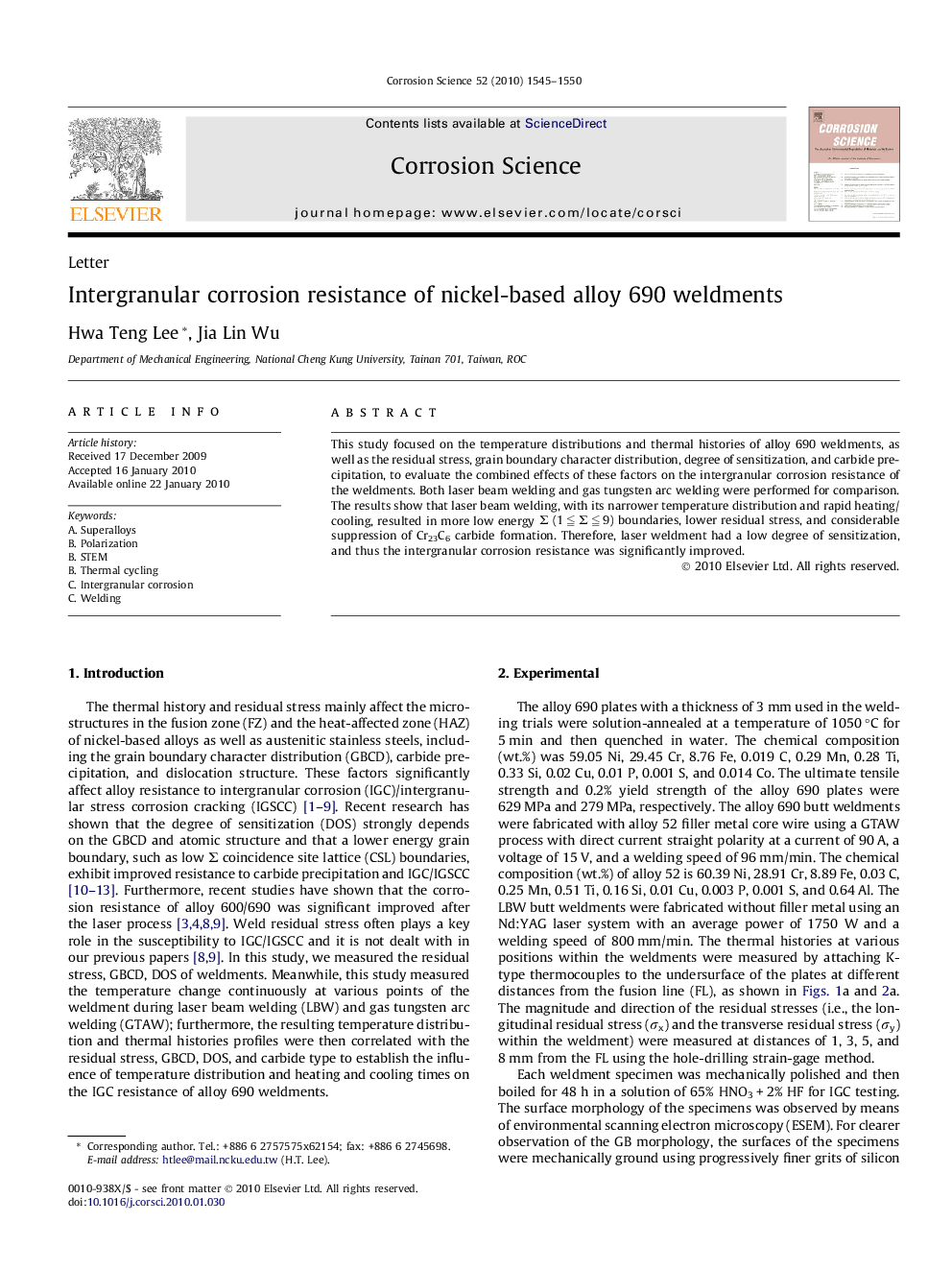| Article ID | Journal | Published Year | Pages | File Type |
|---|---|---|---|---|
| 1470147 | Corrosion Science | 2010 | 6 Pages |
This study focused on the temperature distributions and thermal histories of alloy 690 weldments, as well as the residual stress, grain boundary character distribution, degree of sensitization, and carbide precipitation, to evaluate the combined effects of these factors on the intergranular corrosion resistance of the weldments. Both laser beam welding and gas tungsten arc welding were performed for comparison. The results show that laser beam welding, with its narrower temperature distribution and rapid heating/cooling, resulted in more low energy Σ (1 ≦ Σ ≦ 9) boundaries, lower residual stress, and considerable suppression of Cr23C6 carbide formation. Therefore, laser weldment had a low degree of sensitization, and thus the intergranular corrosion resistance was significantly improved.
